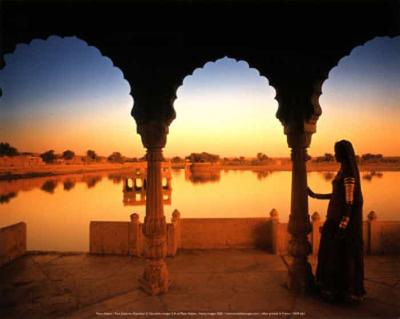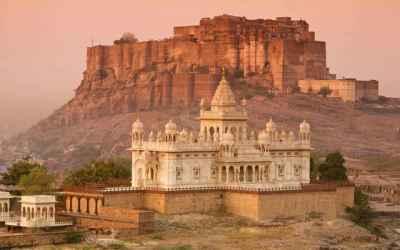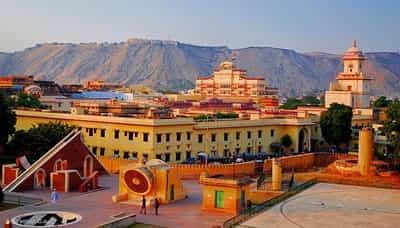A Deep Dive into the Bazaars: Rajasthan’s Trade History
A Deep Dive into the Bazaars: Rajasthan’s Trade History
Rajasthan, the land of kings, is known for its vibrant culture, majestic palaces, and colorful festivals. But there is one aspect of Rajasthan's heritage that often goes unnoticed - its rich trade history. The bazaars of Rajasthan have been witness to centuries of commerce and exchange, and exploring them is like taking a step back in time. In this blog post, we will take a deep dive into Rajasthan's trade history and discover the stories hidden within its bustling bazaars.
The Silk Route: A Gateway to the World
Rajasthan's strategic location along the ancient Silk Route made it a major trading hub. The Silk Route connected China with the Mediterranean, passing through Rajasthan and other parts of India. This brought a diverse range of goods and cultures to the region, shaping its trade history.
One of the most famous bazaars along the Silk Route was the Johari Bazaar in Jaipur. This vibrant market was known for its precious gemstones, particularly its world-renowned diamonds. Traders from all over the world would flock to Johari Bazaar to buy and sell these precious stones, making it a thriving center of trade.
Rajasthan was also famous for its textiles, particularly silk. The city of Ajmer was a major silk trading center, attracting merchants from as far as Persia. The bazaars of Ajmer would buzz with activity as merchants haggled over the finest silks and textiles, turning the city into a melting pot of different cultures and traditions.
The Era of the Marwaris: From Merchants to Industrialists
In the 19th century, Rajasthan witnessed the rise of Marwari merchants who played a crucial role in shaping the region's trade history. The Marwaris, hailing from the Marwar region of Rajasthan, were known for their business acumen and entrepreneurial skills.
One of the most prominent Marwari bazaars is the Nai Sarak in Jodhpur. This bustling market was once the hub of book trading, attracting scholars and intellectuals from all over the country. The Marwaris not only excelled in trade but also ventured into various industries, including textiles, mining, and manufacturing.
The town of Lalitpur is another testimony to the Marwaris' entrepreneurial spirit. The Marwari merchants transformed this small town in southeastern Rajasthan into a flourishing center of trade and industry. Today, Lalitpur is known for its pottery and has become a popular destination for art enthusiasts.
The Modern Bazaars: Tradition Meets Tourism
While the glory days of the Silk Route have faded, Rajasthan's bazaars continue to thrive, albeit in a different context. Today, many of these bazaars are popular tourist destinations, offering a unique blend of tradition and commerce.
Jaipur's famous bazaars like Bapu Bazaar, Tripolia Bazaar, and Nehru Bazaar attract tourists with their colorful textiles, handicrafts, and jewelry. These markets are not just a shopper's paradise but also a feast for the senses, with their vibrant colors, enticing aromas, and energetic atmosphere.
Jodhpur's Clock Tower Market, also known as Ghanta Ghar, is another must-visit for shopaholics. From colorful bandhani fabrics to intricate handicrafts, the market offers a wide range of products that reflect Rajasthan's rich artistic heritage.
Udaipur's Hathipole Market is a treasure trove of handcrafted goods, with artisans showcasing their skills in pottery, textiles, and jewelry. Shopping in this market is not just about buying souvenirs but also supporting local artisans and preserving Rajasthan's traditional crafts.
Conclusion
Rajasthan's bazaars are not just marketplaces; they are a window into the region's trade history. From the days of the Silk Route to the era of Marwari merchants and the modern-day tourist hubs, Rajasthan's bazaars have remained an integral part of its cultural fabric. Exploring these bazaars is like embarking on a journey through time, where the sights, sounds, and scents evoke stories of commerce and exchange. So, whether you are a history enthusiast, a shopaholic, or a cultural explorer, make sure to dive deep into Rajasthan's bazaars and discover the hidden treasures they hold.
Share this blog post with others to spread the word about Rajasthan's rich trade history and its vibrant bazaars!
Disclaimer : The information provided in this blog is for general informational purposes only. While we strive to keep the content accurate and updated, TravelSetu assumes no liability for errors or omissions. If you believe any part of this blog infringes your rights or causes concern, please notify us immediately at info[at]travelsetu[dot]com so that appropriate action can be taken.







